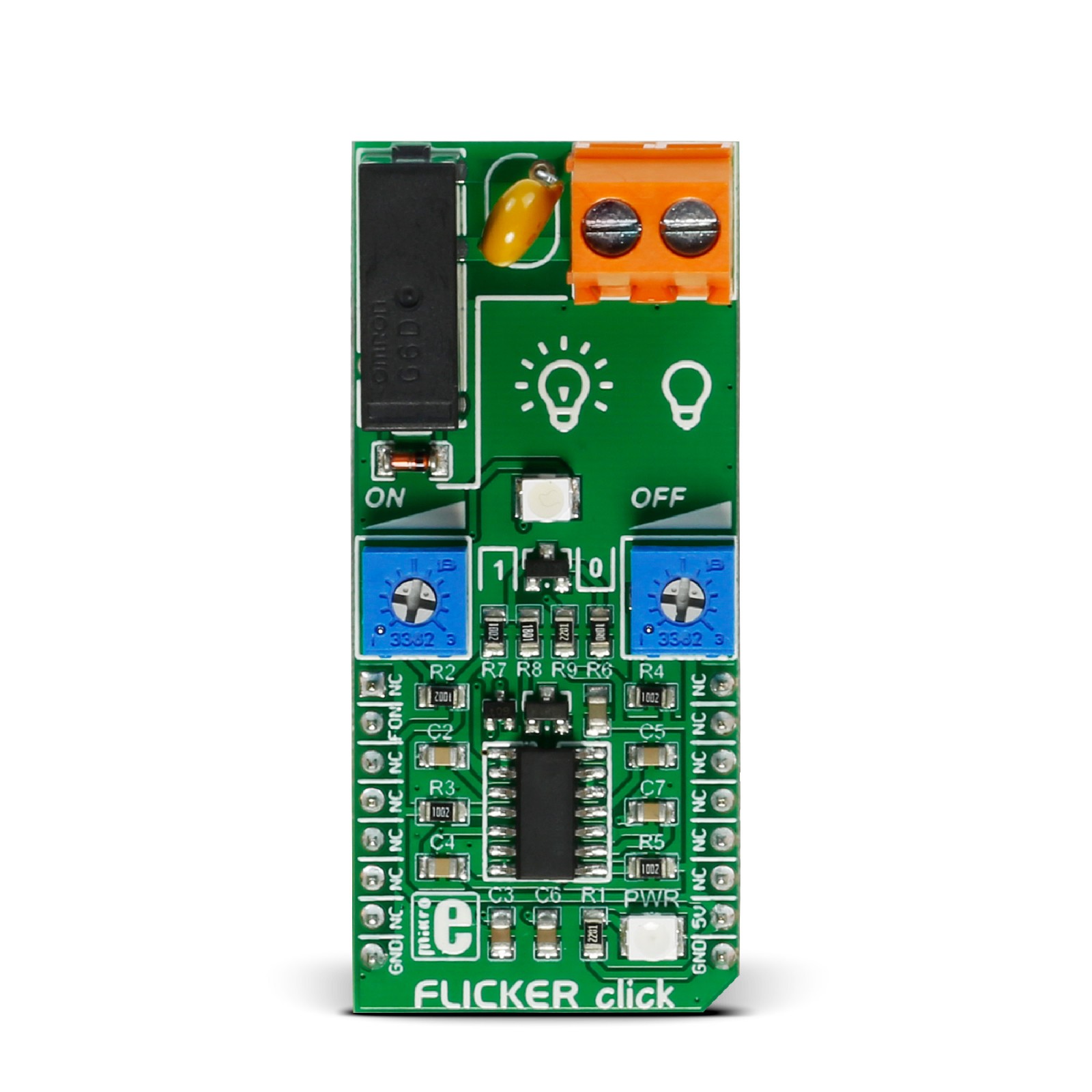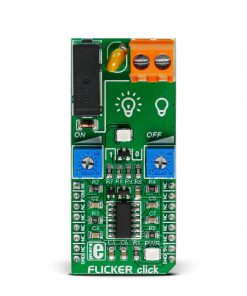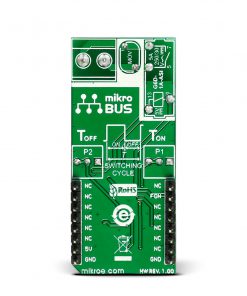Subtotal: R1,535.00
FLICKER Click
R430.00 ex. VAT
Flicker Click is a compact add-on board with a circuit for turning the devices ON and OFF. This board features the G6D-ASI, a power PCB relay from OMRON. The maximum switching loads of the G6D-ASI PCB relay are up to 5A, 250VAC/30VDC. The time between the load flicks can be set to last from 0.1 up to 6 seconds, while the on and off times can be set independently. This Click board™ makes the perfect solution for the development of applications where there is a need to turn on and off devices at specific time intervals, such as blinking LED commercials, alarm system lights, or any other signaling lights.
Flicker Click is supported by a mikroSDK compliant library, which includes functions that simplify software development. This Click board™ comes as a fully tested product, ready to be used on a system equipped with the mikroBUS™ socket.
Stock: Lead-time applicable.
| 5+ | R408.50 |
| 10+ | R387.00 |
| 15+ | R365.50 |
| 20+ | R351.74 |

 3D Motion Click
3D Motion Click  MP3 Click
MP3 Click 















